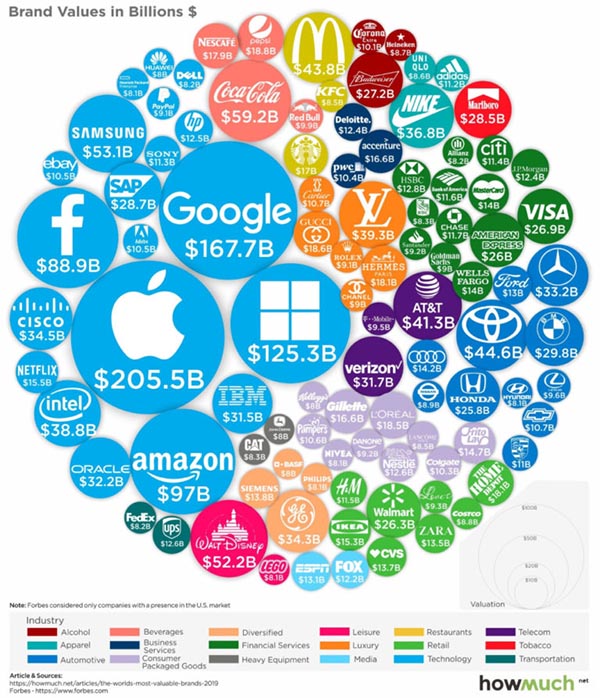Knit Wits
The MIT Media Lab is developing knitted sensors for a variety of applications. Mark Weiser, a noted pioneer of ubiquitous computing, said: “The most profound technologies are those that disappear. They weave themselves into the fabric of everyday life until they are indistinguishable from it.” MIT Media Lab is taking this to heart with its SensorKnits project, designing knit structures with conductive and dielectric yarns that can be used to create smart apparel, home goods and more.
Orwell That Ends Well
It was just about 10 years ago when a story made the rounds about how Amazon had stealthily erased a number of Kindle ebook titles from users’ libraries (and, amusingly, those titles included several George Orwell books). Now, anyone who ever bought a Microsoft ebook and wanted to keep it is out of luck. From Boing Boing:
Microsoft has a DRM-locked ebook store that isn't making enough money, so they're shutting it down and taking away every book that every one of its customers acquired effective July 1.
So, basically, the books will no longer work—a frightening sentence if ever there was one.
Book 2019
book.
— Internet of Shit (@internetofshit) July 1, 2019
circa 2019. pic.twitter.com/MSt8afER8b
Venice Time
You would not have the book erasure problem if you had a book printed in the 15th or 16th century.
Over at BBC Travel, a look at Venice, “the city that invented the publishing industry.”
One of the richest cities in Europe at the time, the Serenissima – as the Venetian Republic was known – was a cosmopolitan city, a place so powerful and important that even Rome and the Catholic Church often failed to subjugate and censor it. Venice offered a fertile ground for the leap in culture started by Gutenberg’s invention.
“Printers came here because [we] had freedom of press,” Olbi said. “[Venice] was a Republic, not a Signoria [a government run by a lord].”
And of course the name that has become synonymous with Venetian book publishing is Aldus Manutius, who opened the Aldine Press in 1495. Manutius was a scholar and published many Greek and Roman classics. He also pioneered the concept of the “pocket edition”—small, portable books that travelers (such as Crusaders) could easily carry with them. To make the books as compact as possible, he also pioneered a typographic style that is with us to this day.
Changing the aesthetics of the print was another one of Manutius’ accomplishments. While most of his fellow publishers continued to use the Gutenberg-popularised Gothic type, the Aldine Press began to print in ‘aldino’. Widely known today as italics because it was invented in Italy by an Italian, this new font was created by Francesco Griffo, a punch cutter who worked with Manutius.
“[Manutius wanted] something lighter, something less rigid – [he thought] it’d be easier to read Greek and Latin classics in a more modern font,” Olbi said. Manutius also realised that italics took less space on the page than the heavy Gothic characters. This coupled with his new ‘formato in ottavo’ made books more accessible to the general public.
Stickwick Stapers
The publisher Edward Lloyd plagiarised many works by Charles Dickens and printed such cheap serialised novels as ‘Martin Guzzlewit’, ‘Nickelas Nickelbery’, and ‘Life and Adventures of Oliver Twiss’ that ends with Oliver receiving a BA at Oxford. (Source: https://t.co/9wpJDRsdUx.)
— Quite Interesting (@qikipedia) July 3, 2019
One is thus reminded of Monty Python’s “Bookshop Sketch”:
Brand Ex
From Marketplace Pulse:
More than three-quarters of Amazon searches are unbranded, seeking for generic products rather than name brands. According to Marketplace Pulse research, 78% of keyword searches done on Amazon are for generic goods. That means consumers are searching for “running shoes women” or “tennis shoes for men” rather than asking, specifically, for Nike, Adidas, or Puma.
Brand Why
But then, on those rare occasions when someone asks for a brand by name, what would that brand be? Over at The Big Picture, an infographic (from Visual Capitalist) showing the world’s 100 most valuable brands:

Underwater Internet
Think that the Internet is immune to any ill effects from sea-level rise? Think again. From National Geographic:
Scientists mapped out the threads and knots of internet infrastructure in the U.S. and layered that on top of maps showing future sea level rise. What they found was ominous: Within 15 years, thousands of miles of fiber optic cable—and hundreds of pieces of other key infrastructure—are likely to be swamped by the encroaching ocean. And while some of that infrastructure may be water resistant, little of it was designed to live fully underwater.
We’ve been drowning in spam for years...now it may be the other way around.
A Clean, Well-Connected Place
This is great #IoT @internetofshit (via Reddit) pic.twitter.com/EOtKFZ2lac
— Lindsey O'Donnell Welch (@LindseyOD123) June 28, 2019
The Home Office That Moves
There appears to be an emerging trend in Japan whereby people rent cars using car share services—and then don’t actually drive anywhere. Whuh? Turns out, they are using them as private spaces rather than as transportation per se. From The Verge:
Car-sharing is widely popular in Japan, despite still gathering momentum in the US. The cars are accessible and easy to locate. Customers can reserve them for a few hours or a whole day on their smartphones. It only costs around 400 yen (less than $4) to use one for 30 minutes, and a car can be picked up at one of the firm’s more than 12,000 parking places across Japan.
The idea of using a car as a nap pod, a phone booth, or even a private YouTube studio to record a rap session is fascinating, and it highlights how the primary function of a service is always up for interpretation. The question is: how will the car-sharing companies react? Will they market their cars as a cheap and easy way to catch some shut-eye? It’s unlikely since most companies make money based on how far their cars are driven. So do they charge an extra fee for renting the car but not driving it as a way to deter this trend?
Street ARt
Have you ever wandered around a new city, come across some cool street art, and wondered who created it? No, nor have we. But if you did, sure, you could take a picture and Instagram it, but that is so yesterday. (We’re not speaking metaphorically; it literally was “yesterday.”) Now, with Google Lens and the power of augmented reality (AR), you can find out immediately who created it. Says Gizmodo:
The new feature is currently being tested in collaboration with Wescover, a digital art discovery catalog of about 5,000 local brands and artists. To use the feature, you simply pull up Google on your iOS or Android smartphone, hit the Lens icon, and point the camera at the artwork in question. If it’s in Wescover’s database, you’ll then see information about the creator, their story, and more examples of their work. You’ll also be able to reach out either as a fan or buyer.
It’s Just a Matter of Time
Family Creeped Out By Alexa Playing Back Conversations They Haven’t Even Had Yet https://t.co/5cUVl6YemL pic.twitter.com/QpNbY9acxA
— The Onion (@TheOnion) July 10, 2019
For the Birds
Sure, we all like birds. What’s not to like? But truth be told, sometimes we can feel a little like Tippi Hedren, which is why companies that make anti-bird spikes are perennial exhibitors at shows like the ISA Sign Expo. However, some birds are no birdbrains, such as this cockatoo, which, in a popular clip this week, was caught ripping out anti-bird spikes from a shopping center ledge.
Solarmander
Photosynthesis is a biological process commonly associated with plants, and few animals possess the ability to generate energy directly from the sun. However, meet the yellow spotted salamander, Ambystoma maculatuma, which, thanks to a symbiotic relationship with algae, can in fact produce energy from sunlight. We humans as a species may want to look into this further...
Robot Boss
Says the New York Times: “A Machine May Not Take Your Job, but One Could Become Your Boss.”
If you use Basecamp or Slack, it seems like that’s already happening.
Prey Tell
Anyone who has ever owned a cat (or even some dogs) has had the experience of receiving “love offerings”—a mouse, a frog, chipmunk, maybe even something more ambitious—from a beloved yet still decidedly feral pet. Well, thanks to AI and a new kind of cat flap that is under development, you can bar your bloodthirsty little furball from bringing its prey into the house. From the BBC:
Ben Hamm used machine-learning software to train a system to recognise when his cat Metric was approaching with a rodent or bird in its mouth.
“Metric”? Anyway:
He explained that the most time-consuming part of the task had been the need to supply more than 23,000 photos. Each had to be hand-sorted to determine whether the cat was in view, whether it was coming or going and if it was carrying prey. Mr Hamm had to create a database of thousands of images to train the software.
The process took advantage of a technique called supervised learning, in which a computer is trained to recognise patterns in images or other supplied data via labels given to the examples. The idea is that once the system has enough examples to work off, it can apply the same labels itself to new cases.
Hat Crime
Has the thought of wearing a KFC chicken bucket on your head ever seemed appealing? Have you ever aspired to be a somewhat shy but incredibly prolific guitar genius? Well, now’s your chance, and all it takes is a ticket to Russia. We give you, the KFC Bucket Hat. From Adweek:
Created by agency Wieden + Kennedy Amsterdam for KFC Russia, the bucket hat was designed in partnership with St. Petersburg-based streetwear brand Mam Cupy. They’re currently selling for 1,800 rubles, which is about $30 U.S.

Back in the High Life
We wonder if anyone has done a study on what appears to be a deterioration of hearing among bakers. A few weeks ago, we linked to a story about a woman who had wanted a Mariah Carey photo cake for her birthday and was inadvertently given a cake with Marie Curie on it.
Now, we find that a woman in Georgia had wanted a Moana-themed birthday cake only to discover that the baker thought she had wanted a marijuana-themed cake.

Photo credit: Kensli Taylor Davis
Maybe the baker thought that was more appropriate for a 25-year old than Moana? Dunno. Maybe someone ought to supply the bakery industry with a set of Miracle Ears or something.
Disk Drive
Vinyl records are apparently making a comeback, and one company is putting a high-tech spin on the old-school LP, as it were: a mag-lev levitating turntable. Now your old copy of Sgt. Pepper can get high with you.

Tale of the Tape
And in other product technology news that combines the retro with the current, you can also buy a Bluetooth-enabled cassette player, for those that want the experience of the Sony Walkman combined with the flakiness of wireless headphones.
Can an AirPlay-enabled 8-track player be too far behind?
This Week in Printing, Publishing, and Media History
July 8
1889: The first issue of The Wall Street Journal is published.
1947: Reports are broadcast that a UFO crash landed in Roswell, N.M., in what became known as the Roswell UFO incident.
July 9
1901: Prolific English author Barbara Cartland born. She published 722 novels and holds the Guinness World Record for the most novels written in a single year (23 in 1976). When she died in 2000, the paper industry went into a severe recession.
1911: Decidedly less prolific English author and illustrator Mervyn Peake born.
1945: Decidedly more prolific author (but nowhere near Cartland’s output), Dean Koontz, born.
July 10
1856: Serbian-American physicist and engineer Nikola Tesla born.
1871: French novelist Marcel Proust born. In Remembrance of Things Past, he probably wrote as many words in one novel as Cartland wrote in 722.
1888: Greek-Italian painter and set designer Giorgio de Chirico born.

1962: Telstar, the world’s first communications satellite, is launched into orbit.
1978:ABC World News Tonight premieres.
2008: Apple’s AppStore opens.
July 11
1804: He did not throw away his shot: U.S. Vice President Aaron Burr (spoiler alert) mortally wounds Alexander Hamilton in a duel.
1927: American-Canadian physicist and engineer, inventor of the laser, Theodore Maiman born.
1960:To Kill a Mockingbird by Harper Lee is first published in the United States.
July 12
1493: Hartmann Schedel’s Nuremberg Chronicle, one of the best-documented early printed books, is published.
1580: The Ostrog Bible, one of the early printed Bibles in a Slavic language, is published.
1854: George Eastman, founder of Eastman Kodak, born.
July 13
1793: Journalist and French revolutionary Jean-Paul Marat is assassinated in his bathtub by Charlotte Corday, a member of the opposing political faction.
1956: The Dartmouth workshop is the first conference on artificial intelligence.
1985: The Live Aid benefit concert takes place in London and Philadelphia, as well as other venues such as Moscow and Sydney.
July 14
1798: The Sedition Act becomes law in the United States making it a federal crime to write, publish, or utter false or malicious statements about the United States government.
1853: Opening of the first major US world’s fair, the Exhibition of the Industry of All Nations in New York City.
1910: American animator, director, producer, actor, and co-founder of Hanna-Barbera William Hanna born.
1912: American singer-songwriter and guitarist Woody Guthrie born.
1965: The Mariner 4 flyby of Mars takes the first close-up photos of another planet.
1974: British comedian David Mitchell born.
2015: NASA’s New Horizons probe performs the first flyby of Pluto, and thus completes the initial survey of the Solar System.










Discussion
Join the discussion Sign In or Become a Member, doing so is simple and free